#german monarchy
Text

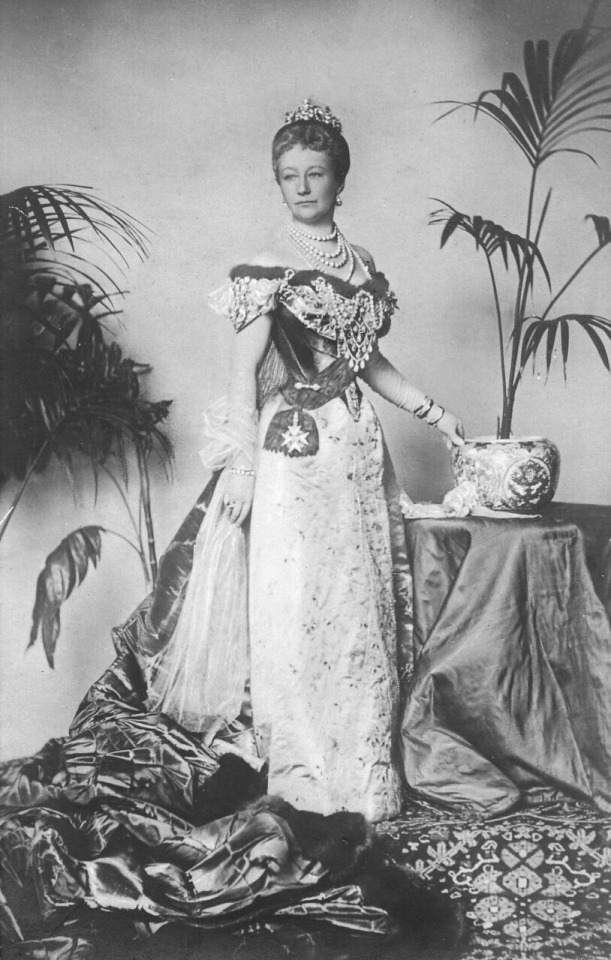
October 22 1858: The Birth of Kaiserin Augusta Victoria of Schleswig-Holstein
Augusta Victoria of Schleswig-Holstein was the eldest daughter of Frederick VIII, Duke of Schleswig-Holstein and Princess Adelheid of Hohenlohe-Lagenburg. Tragedy struck only a week after her birth when her elder brother died from illness. In 1860, her younger sister, Caroline Mathilda, was born. Who was regarded as prettier and a brighter personality than the chubby, serious, submissive Augusta Victoria. Soon Augusta’s mother would give birth to another boy, Gerhard, who died in infancy. Their next male heir and fifth child, Ernst Gunther, was a perfectly healthy baby boy. Augusta would have two other sisters, Louise Sophie in April 1866 and Feodora Adelaide in July 1874.
In her family, she was known affectionately as “Dona.” Augusta’s obedient nature was noted on early in her youth, even by her future mother-in-law Crown Princess Frederick. ‘It is strange how good some children are – and how little trouble they give,’ she wrote to her mother, Queen Victoria, when Augusta Victoria was nine years old. ‘Ada’s children are patterns of obedience, gentleness – the best of dispositions’. (1)
The thought of a match between Princess Augusta Victoria of Schleswig-Holstein and Prince Wilhelm of Prussia was contemplated ever since they were children, as noted by the prince (future Kaiser, ex-Kaiser) later in the future. But was never taken seriously until after the prince was rejected by Princess Elisabeth of Hesse and by Rhine. Perhaps, Wilhelm was seeking for a rebound in Dona and it was a success. As the couple married on the 27th of February 1881. The marriage has been regarded to be happy but not without struggle. As Wilhelm quickly grew bored at his new wife’s longing for a simple domestic lifestyle, having multiple affairs throughout the years. And in the beginning only saw Dona as a broodmare. It was only after an ear infection gone bad, where Augusta stayed by Wilhelm’s side throughout the duration of it did he start to see her in an adjusted light, but continued to be unfaithful to her.
She bore him seven children:
Wilhelm, German Crown Prince, Crown Prince of Prussia (1882-1951)
Prince Eitel Friedrich (1883-1942)
Prince Adalbert (1884-1948)
Prince August Wilhelm (1887-1949)
Prince Oskar (1888-1958)
Prince Joachim (1890-1920)
Princess Viktoria Louise of Prussia (1892-1980)
Her days as Empress, she was regarded by the court as a prudish, a stickler for rules who punished anyone for the simplest gesture she deemed to be “immoral.” She was deemed by many as unremarkable and plain with a gaudy and tacky sense of fashion. With Nicholas II remarking to his mother, the Dowager Empress. That she ‘did her best to be pleasant but looked awful in sumptuous gowns completely lacking in taste; in particular the hats she wore in the evening were frightful.’
Though as overbearing and a nuisance as she was in public life and a part of her private life, by some family members, such as Empress Frederick (with whom she had a very heated feud with and who Augusta enjoyed snubbing frequently) who wrote to her daughter, Sophie, she was characterized as: ‘very grand and stiff and cold and condescending at first, but became much nicer afterwards. Perhaps it was also partly shyness.’ and by her younger sister, Louise Sophie that when she was ‘not bowing to the will of her autocratic husband she was easy and indulgent’. “Her cousin Alice of Albany, who was sometimes mildly critical of her older relations, found her ‘most affable and kind’.”(1)
She was her husband’s biggest supporter throughout everything (for better and for worse) and was crushed when she was stripped of her titles as German Empress and Queen of Prussia after the war. Her health, which was already declining ever since the 1890s (causing her to miscarry twice) went down a rapid decline in the 1920s. And it had worsened when she had heard of the news of the death of her youngest son, Prince Joachim. She passed away on the 11th April 1921, in spite of her personal flaws, she was a beloved Empress by the German people and her popularity outshined her husband’s. Thousands lined up to see her off, where she would be buried at the Temple of Antiquities in the gardens near the New Palais in Postdam. Her husband, the ex Kaiser Wilhelm II was forbidden to cross into Germany to see his wife off for the final time.
Her room in Huis Doorn was soon turned into a shrine dedicated to the late Empress. With Wilhelm ordering for the room to regularly be cleaned with flowers and a cross draped over the bed. “Once a week, for the rest of his twenty years, he would retire there on his own, to go and mourn her memory.“ (1)
Wilhelm adhered to his late wife’s wishes for him to marry someone else when she was gone. When only a year later he would marry Princess Hermine of Reuss. He passed away in June of 1941, at age 82, 20 years after her passing.
Source : The Last German Empress
#monarchy#kaiser wilhelm ii#german empire#german monarchy#imperial germany#wilhelm ii#kaiserin augusta victoria#empress augusta victoria#royal birthdays#THIS TOOK ME AN HOUR😭#and her bday is about to end in 8 minutes#i was hella procrastinating lmao#happy birthday to Dona ig#german royalty#german royal family
25 notes
·
View notes
Photo

“WILL THE EX-KAISER RE-ASCEND GERMAN THRONE?” Owen Sound Sun Times. March 13, 1933.
---
News from Germany is quite disturbing at the present time. The Republican flag has been replaced by the flag of the Ex-Kaiser Wilhelm, by order of President Von Hindenburg, with the Hitler flag having equality with it. Europe is much concerned over recent events in Germany and there are hints of another war.
From left to right:
EX-KAISER WILHELM,
CHANCELLOR HITLER
PRESIDENT VON HINDENBURG
[AL: A key lesson from reading Canadian coverage of the Nazi seizure of power is that even the most anodyne newspaper coverage was rightly concerned about what this meant, and had Hitler pegged as a dangerous militarist. It was only later, at high levels of press and politician, that a pervasive effort was made to make his government seem reasonable and normal.]
#nazi seizure of power#german militarism#german monarchy#hohenzollern#kaiser wilhelm ii#hin#gravediggers of german democracy#german rearmament#nsdap#imperial germany#third reich
0 notes
Text
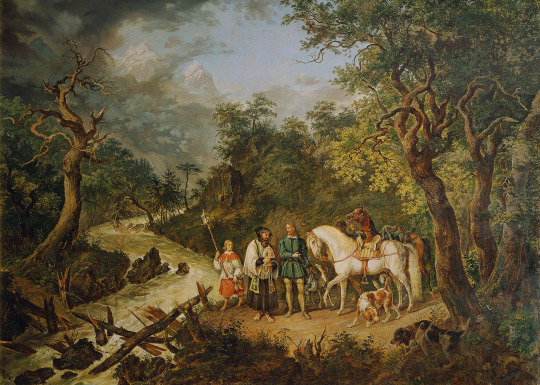
Rudolf von Habsburg and the Priest by Johann Nepomuk Hoechle
#rudolf von habsburg#priest#art#johann nepomuk hoechle#horse#europe#european#history#house of habsburg#habsburg#habsburg monarchy#german#germany#christian#christianity#hunting#hunt#dogs#hounds#rudolph of habsburg#rudolf of habsburg#horses#river#mountain#mountains#landscape
46 notes
·
View notes
Photo

Map of countries which have been ruled by German dynasties.
211 notes
·
View notes
Text
Royal Godparents to Royal Godchildren
I did this list back in 2012, and got some great responses. I've updated and edited parts of the list. Again, any corrections and/or adds, message me! Thanks in advance!
When choosing godparents for their children, the parents often chose friends or other relatives. Often in royal circles, royals also pick other royals. Here’s a partial list. (Yes, I know some lists are incompelte as some of these royals’s godchildren are not royals themselves.) If you have any additions, please feel free to message me!
Belgium
King Baudouin I
Princess Marie-Christine of Belgium (1951)
King Leopold III
Princess Beatrix of The Netherlands (1938)
Princess Marie-Astrid of Luxembourg (1954)
King Philippe of The Belgians (1960)
Queen Astrid
Princess Astrid, Mrs. Ferner (1932)
King Albert II
Princess Marie-Esméralda of Belgium (1956)
Queen Paola
Prince Amedeo of Belgium, Archduke of Austria-Este (1986)
King Philippe
Prince Amedeo of Belgium, Archduke of Austria-Este (1986)
Princess Marie Gabrielle de Nassau (1986)
Queen Matilde
Princess Alexia of The Netherlands (2005)
Princess Isabella of Denmark (2007)
Princess Astrid, Archduchess of Austria-Este
Prince Sébastien of Luxembourg (1992)
Prince Amedeo, Archduke of Austria-Este
Princess Elisabeth of Belgium, The Duchess of Brabant (2001)
Princess Claire
Princess Eléonore of Belgium(2008)
Prince Lorentz, The Archduke of Austria-Este
Prince Carl-Johan de Nassau (1992)
Bulgaria
Queen Margarita
Prince Umberto of Bulgaria (1999)
Konstantin-Assen, Prince of Vidin, Duke of Saxony
Infanta Sofia of Spain (2007)
Princess Rosrio
Doña Irene de Todos los Santos Urdangarín y de Borbón (2005)
Denmark
Queen Ingrid
Princess Margaret, Countess of Snowdon (1930)
King Carl XVI of Sweden (1946)
King Christian X
Princess Benedikte of Denmark, Princess of Sayn-Wittgenstein-Berleburg (1944)
Queen Anne-Marie of Greece (1946)
Queen Alexandrine
Princess Benedikte of Denmark, Princess of Sayn-Wittgenstein-Berleburg (1944)
Queen Anne-Marie of Greece (1946)
Princess Dagmar
Queen Anne-Marie of Greece (1946)
Princess Thyra
Princess Astrid, Mrs. Ferner (1932)
King Fredrick IX
King Carl XVI of Sweden (1946)
Queen Margarethe II
King Williem-Alexander of The Netherlands (1967)
Crown Prince Hakon of Norway (1973)
Prince Carl Phillip of Sweden (1979)
Crown Prince Fredrick of Denmark
Count Nikolai af Monzepat (1999)
Countess Ingrid Alexandra Irma Astrid Benedikte von Pfeil und Klein-Ellguth (2003)
Princess Ingrid Alexandra of Norway (2004)
Prince Oscar Carl Olof of Sweden, Duke of Skane (2016)
Crown Princess Mary
Count Henrik af Monzepat (2009)
Konstantin Gustav Heinrich Richard Johannsmann (2010)
Princess Estelle of Sweden (2012)
Prince Christian
Prince Gustav Alberct of Sayn-Wittgenstein-Berleberg (2023)
Princess Marie
Princess Josephine of Denmark (2011)
Princess Caroline-Mathilde
Princess Benedikte of Denmark, Princess of Sayn-Wittgenstein-Berleburg (1944)
Princess Elisabeth
Theodor Christian Emmanuel Rosanes af Rosenborg (2009)
Princely Family of Lieiningen
Princess Alexandra
Princess Alexandra Charlotte Ulrike Maryam Virgina of Hanover (1999)
Princely Family of Hanover
Princess Sophie of Hanover
Prince Edward, The Duke of Edinburgh (1964)
Princely Family of Hesse
Prince Philipp
Count Friedrich Richard Oscar Jefferson von Pfeil und Klein-Ellguth (1999)
Princely Family of Waldeck and Pyrmont
Princess Elisabeth
Princess Beatrix of The Netherlands (1938)
Princely Family of Liechtenstein
Prince Constantin
Prince Georg Antonius of Liechtenstein (1999)
Princess Margaretha
Archduke Imre of Austria (1985)
Princess Louise of Belgium (2004)
Princely Family of Monaco
Prince Albert
Baron Jean-Leonard Taubert-Natta (1974)
Pierre Rainier Stefano Casiraghi (1987)
Louis Robert Paul Ducruet (1992)
Pauline Grace Maguy Ducruet (1994)
Raphaël Casiraghi Elmaleh (2013)
Princess Charlene
Raphaël Casiraghi Elmaleh (2013)
Princess Caroline of Hanover
Louis Robert Paul Ducruet (1992)
Pauline Grace Maguy Ducruet (1994)
Princess Stephanie
Andrea Albert Pierre Casiraghi (1984)
Charlotte Marie Pomeline Casiraghi
Princess Alexandra Charlotte Ulrike Maryam Virgina of Hanover (1999)
Baroness Elisabeth Anne de Massy
Princess Stephanie of Monaco, Countess of Polinac (1965)
The Netherlands
Queen Juliana
King Carl XVI of Sweden (1946)
Queen Anne-Marie of Denmark (1946)
King Williem-Alexander
Count Claus-Casmir van Orange-Nassau, Jonkheer van Amsberg (2004)
Countess Zaria of Oranje-Nassau (2006)
Princess Estelle of Sweden (2012)
Prince Constantijn
Princess Catharina-Amalia of The Netherlands, The Princess of Orange (2003)
Countess Luana of Orange-Nassau, Jonkvrouwe van Amsberg (2005)
Prince Friso
Countess Eloise van Orange-Nassau, Jonkvrouwe van Amsberg (2002)
Princess Alexia of the Netherlands (2005)
Norway
King Haakon VII
Princess Ragnhild, Mrs. Lorentzen (1930)
Princess Astrid, Mrs. Ferner (1932)
Queen Anne-Marie of Greece (1946)
Queen Maud
Princess Ragnhild, Mrs. Lorentzen (1930)
Princess Astrid, Mrs. Ferner(1932)
King Olav V
Princess Margriet Francisca of the Netherlands (1943)
King Carl XVI Gustaf of Sweden (1946)
Princess Märtha Louise of Norway (1971)
Crown Princess Martha
Crown Princess Martha
Queen Anne-Marie of Greece (1946)
King Harald
Crown Princess Victoria of Sweden (1977)
Maud Angelica Behn (2003)
Princess Ingrid Alexandra of Norway (2004)
Queen Sonja
Prince Sverre Magnus of Norway (2005)
Crown Prince Hakkon
Maud Angelica Behn (2003)
Prince Christian of Denmark (2005)
Princess Estelle of Sweden(2012)
Crown Princess Mette-Mairt
Prince Christian of Denmark (2005)
Emma Tallulah Behn (2008)
Princess Märtha Louise
Count Friedrich Richard Oscar Jefferson von Pfeil und Klein-Ellguth (1999)
Princess Ingrid Alexandra of Norway (2004)
Princess Ragnhild, Mrs. Lorentzen
Princess Märtha Louise of Norway (1971)
Spain
Queen Victoria Eugenia
Infante Juan, Count of Barcelona (1913)
Doña María del Rosario Cayetana Fitz-James Stuart y Silva, 18th Duchess of Alba de Tormes, Grandee of Spain (1926)
Queen Fabiola of Belgium (1928)
Prince Albert of Monaco (1957)
Felipe, Prince of Austrias (1968)
King Juan Carlos
Don Felipe Juan Froilán de Todos los Santos de Marichalar y Borbón (1998)
Leonor, The Princess of Asturias (2005
Queen Sofia
Leonor, The Princess of Asturias (2005)
King Felipe VI
Princess Sofia Vidinska of Bulgaria (1999)
Doña Victoria Federica de Todos los Santos de Marichalar y de Borbón (2000)
Prince Vincent of Denmark (2011)
Infanta Elena
Don Juan Valentín de Todos los Santos Urdangarín y de Borbón (1999)
Prince Achileas-Andreas of Greece (2000)
Infanta Christina
Don Miguel de Todos los Santos Urdangarín y de Borbón (2002)
Iñaki, the former Duke of Palma de Mallorca
Don Miguel de Todos los Santos Urdangarín y de Borbón (2002)
Infanta Maria Cristina
Princess Marie-Christine of Belgium (1951)
Infanta Cristina, Duchess of Palma de Mallorca (1965)
Princely Family of Sayn-Wittgenstein-Berleburg
Gustav, 7th Prince of Sayn-Wittgenstein-Berleburg
Count Friedrich Richard Oscar Jefferson von Pfeil und Klein-Ellguth (1999)
Konstantin Gustav Heinrich Richard Johannsmann (2010)
Prince Vincent of Denmark (2011)
Carina, Princess of Sayn-Wittgenstein-Berleberg
Countess Athena af Monzepat
Princess Nathalie of Sayn-Witentein-Berleburg
Countess Ingrid Alexandra Irma Astrid Benedikte von Pfeil und Klein-Ellguth (2003)
Princess Benedikte
Prince Joachim of Denmark (1969)
Princess Madeleine of Sweden, Duchess of Hälsingland and Gästrikland (1981)
Royal Family of Italy
Prince Carlo, Duke of Castro
Princess Joesphine of Denmark (2011)
Greece
Queen Olga
Prince Phillip, Duke of Edinburgh (1921)
Prince George
Queen Anne-Marie of Greece (1946)
King Constantine II
Prince Constantijn of the Netherlands (1969)
Prince William of Wales (1982)
Crown Prince Pavlos
Prince Christian of Denmark (2005)
Prince Sverre Magnus of Norway (2005)
Princess Alexia
Don Pablo Nicolás Sebastián de Todos los Santos Urdangarín y de Borbón (2000)
Countess Ingrid Alexandra Irma Astrid Benedikte von Pfeil und Klein-Ellguth (2003)
Princess Isabella of Denmark (2007)
Emma Tallulah Behn (2008)
Prince Nikolas
Count Friedrich Richard Oscar Jefferson von Pfeil und Klein-Ellguth (1999)
Grand Ducal Family of Luxembourg
Grand Duchess Charlotte
Princess Marie-Astrid of Luxembourg (1954)
Grand Duchess Josephine-Charlotte (1927-2005)
Princess Astrid of Belgium, Archduchess of Austria-Este (1962)
Prince Felix (1893-1970)
Prince Albert of Belgium (1934)
Princess Margaretha of Luxembourg (1957)
Prince Jean of Luxembourg (1957)
Princess Marie-Gabrielle (1925)
Grand Duke Henri (1955)
Prince Jean (1957-)
Prince Félix of Luxembourg (1984)
Grand Duchess Joesphine-Charlotte
Princess Marie-Esméralda of Belgium (1956)
Princess Astrid of Belgium, Archduchess of Austria-Este (1962)
Grand Duke Henri
King Albert II of Belgium (1934)
Princess Marie-Gabrielle of Luxembourg (1986)
Guillaume, Hereditary Grand Duke
Prince Sébastien of Luxembourg (1992)
Prince Paul-Louis of Luxembourg (1998)
Prince Noah of Nassu (2007)
Princess Ariane of the Netherlands (2007)
Princess Alexandra
Prince Gabriel de Nassau (2006)
Prince François Henri Louis Marie Guillaume of Luxembourg (2023)
Prince Louis
Prince Charles Jean Philippe Joseph Marie Guillaume of Luxemborug (2020)
Princely Family of Sayn-Wittgenstein-Hohenstein
Prince Georg of Sayn-Wittgenstein-Hohenstein
Countess Ingrid Alexandra Irma Astrid Benedikte von Pfeil und Klein-Ellguth (2003)
Sweden
King Gustaf V
Princess Ragnhild, Mrs. Lorentzen (1930)
King Carl XVI Gustaf of Sweden (1946)
Princess Benedikte of Denmark, Princess of Sayn-Wittgenstein-Berleburg (1944)
Prince Carl of Sweden & Norway (1861-1951)
Princess Ragnhild, Mrs. Lorentzen (1930)
Princess Astrid, Mrs. Ferner (1932)
Prince Eugen of Sweden & Norway (1865-1947)
Princess Astrid, Mrs. Ferner (1932)
Princess Ingeborg of Sweden & Norway (1878-1958)
Princess Ragnhild, Mrs. Lorentzen (1930)
Princess Astrid, Mrs. Ferner (1932)
Princess Margaretha of Sweden & Norway
Princess Benedikte of Denmark, Princess of Sayn-Wittgenstein-Berleburg (1944)
Princess Margaretha of Luxembourg (1957)
Princess Margaretha (1899-1977)
Prince Jean of Luxembourg(1957)
Princess Ingeborg
Princess Benedikte of Denmark, Princess of Sayn-Wittgenstein-Berleburg (1944)
King Carl XVI Gustav
Hakon, Crown Prince of Norway (1973)
Crown Princess Victoria
Prince Constantine Alexios of Greece & Denmark (1998)
Baroness Madeleine von Dincklage (1999)
Princess Catharina-Amalia of the Netherlands (2003)
Princess Ingrid Alexandra of Norway (2004)
Prince Christian of Denmark (2005)
Princess Eléonore of Belgium (2008)
Princess Leonore Lilian Maria of Sweden, The Duchess of Gotland (2014)
Prince Alexander Erik Hubertus Bertil of Sweden, The Duke of Södermanland (2016)
Prince Carl Phillip
Princess Estelle of Sweden, The Duchess of Ostergotland (2012)
Prince Nicolas of Sweden, Duke of Ångermanland (2015)
Princess Madeleine
Prince Oscar Carl Olof of Sweden, The Duke of Skane (2016)
Prince Gabriel Carl Walter of Sweden, The Duke of Dalarna (2017)
Princess Christina
Prince Joachim of Denmark (1969)
Princess Désirée, Baroness Silfverschiöld
Crown Princess Victoria of Sweden (1977)
Prince Bertil, Duke of Halland
Queen Anne-Marie of Greece (1946)
Prince Carl Phillip of Sweden (1979)
Princess Birgitta
Prince Carl Phillip of Sweden (1979)
Princess Margaretha
Princess Märtha Louise of Norway (1973)
Mr. Gustaf Magnusson
Prince Nicolas Paul Gustaf of Sweden, The Duke of Angermanland (2015)
Mr. Victor Magnusson
Prince Alexander Erik Hubertus Bertil of Sweden, Duke of Södermanland (2016)
United Kingdom
Queen Victoria
Prince Albert Edward Kamehameha of Hawaiʻi (1858–1862)
Prince Alfred Alexander William Ernest Albert of Edinburgh, later Hereditary Prince of Saxe-Coburg and Gotha (1874–1899)
Princess Alice Mary Victoria Augusta Pauline of Albany (1883–1981)
Prince Edward Albert Christian George Andrew Patrick David of York, later Edward VIII (1894–1972)
Prince Albert Frederick Arthur George of York, later George VI (1895–1952)
Grand Duchess Olga Nikolaevna of Russia (1895–1918)
Princess Victoria Alexandra Alice Mary of York (1897–1965)
Prince Louis Francis of Battenberg, later 1st Earl Mountbatten of Burma (1900–1979)
King George V
Queen Elizabeth II (1926)
Queen Mary
Queen Elizabeth II (1926)
Princess Margriet Francisca of the Netherlands (1943)
Queen Anne-Marie of Greece (1946)
Mary, Princess Royal and Countess of Harewood
Princess Elizabeth Alexandra Mary of York, later Elizabeth II (1926)
Prince Edward George Nicholas Patrick Paul, The Duke of Kent (1935)
Prince George, The Duke of Kent
Princess Astrid, Mrs. Ferner (1932)
King Edward VIII
Princess Margaret of York (1930)
Princess Alice, Countess of Athlone
Princess Beatrix of The Netherlands (1938)
Prince Arthur, Duke of Connaught
Princess Elizabeth of York (1926)
Princess Mary, Viscountess Lascelles
Princess Elizabeth of York (1926)
The Princess Victoria
Princess Margaret, Countess of Snowdon (1930)
Princess Ragnhild, Mrs. Lorentzen (1930)
King George VI
Princess Ragnhild, Mrs. Lorentzen (1930)
Queen Elizabeth, The Queen Mother
Prince Alexander of Yugoslavia (1924)
Gerald David Lascelles Esq (1924–1998)
Princess Astrid of Norway (1932)
Princess Alexandra of Kent (1936)
Princess Sofia of Greece, later Queen of Spain (1938)
Princess Irene of the Netherlands (born 1940)
Prince William Henry Andrew Frederick of Gloucester (1941–1972)
Princess Benedikte of Denmark, Princess of Sayn-Wittgenstein-Berleburg (1944)
Prince Richard of Gloucester, later Duke of Gloucester (1944)
Princess Anne of Edinburgh (1950)
The Hon (Robert) Jeremy Lascelles (1955)
Queen Elizabeth II
David Henry George Lascelles, 8th Earl of Harewood (1950)
Princess Fredrike of Hanover (1954)
David Albert Charles Armstrong-Jones, Viscount Linley (1961)
Edwina Victoria Louise Brudenell (1961)
James Robert Bruce Ogilvy (1964)
Princess Theodora of Greece & Denmark (1983)
Princess Margaret, Countess of Snowdon
King Charles III (1948)
Prince Phillip, Duke of Edinburgh
Crown Princess Margareta, Custodian of the Crown of Romania (1948)
Norton Louis Philip Knatchbull, 8th Baron Brabourne (1947)
Princess Maria Tatiana of Yugoslavia (1957)
Prince Christopher of Yugoslavia (1960)
George Windsor, Earl of St. Andrews (1962)
Prince Philippos of Greece and Denmark (1986)
King Charles III
The Hon. Nicholas Knatchbull (1964-1979)
The Hon. Timothy Knatchbull (1964)
Marina Victoria Alexandra Ogilvy (1966)
Pavlos, Crown Prince of Greece (1967)
India Amanda Caroline Hicks (1967)
Lord Nicholas Windsor (1970)
Alexander Patrick Gregers Richard Windsor, Earl of Ulster (1970)
The Hon. Edward John Hugo Tollemache (1975)
Peter Mark Andrew Phillips (1977)
The Hon. Nicholas Louis Charles Norton Knatchbull (1981)
Hugh Grosvenor, The Duke of Westminster (1991)
Lord Frederick Charles Wellesley(1992)
Princess Maria-Olympia of Greece & Denmark (1996)
Samuel David Benidict Chatto (1996)
Kumar Padmanabh Singh, Crown Prince of Jaipur (1998)
Diana, Princess of Wales
The Lady Edwina Louise Grosvenor (1981)
Alexandra Victoria Edwina Diana Knatchbull (1982)
Prince Philippos of Greece and Denmark (1986)
Jakie James Warren (1986)
The Lady Mary Luise Wellesley (1986)
Edward Edmund Maximilian George Windsor, Lord Downpatrick (1988)
Jack William Bartholomew (1989)
Benjamin Peter Marcus Samuel (1989)
Domenica Marianna Tertia Lawson (1995)
The Prince William, The Prince of Wales
Prince Constantine-Alexios of Greece & Denmark (1998)
Mia Grace Tindall (2014)
The Prince Andrew, The Duke of York
Zara Anne Elizabeth Phillips Tindall (1981)
Prince Henry, The Duke of Sussex (Prince Harry, 1984)
The Prince Edward, The Duke of Edinburgh
The Lady Rose Gilman (1980)
Lady Ella Mountbatten (1996)
Count Nikolai af Monzepat (1999)
Sophie, The Duchesss of Edinburgh, The Countess of Wessex
Lady Alexandra Mountbatten (1998)
Anne, The Princess Royal
Philip, Hereditary Prince of Hohenlohe-Langenburg (1970)
Haakon, Crown Prince of Norway (1973)
Prince Peter of Yugoslavia (1980)
Princess Eugenie, Mrs. Jack Brooksbank
Maud Daphne Marina Windsor (2013)
Zara Anne Elizabeth Tindall
Prince George Alexander Louis of Wales (2013)
David Armstrong-Jones, The 2nd Earl Snowdon
Princess Beatrice Elizabeth Mary, Mrs. Edoardo Mapelli (1988)
The Lady Sarah Chatto
The Lady Rose Gilman (1980)
Prince Henry of Wales (1984)
Lady Louise Alice Elizabeth Mary Mountbatten-Windsor (2003)
Princess Michael of Kent
Princess Maria Chiara Amalia Carola Louise Carmen of Bourbon-Two Sicilies (2005)
Katharine, Duchess of Kent
Prince Edward, The Duke of Edinburgh (1964)
Princess Alexandra of Kent, The Hon. Lady Ogilvy
George Windsor, The Earl of St Andrews (1962)
The Prince William of Wales (1982)
James Robert Bruce Ogilvy
Princess Eugenie Victoria Helena, Mrs. Jack Brooksbank (1990)
#Royal Godparents#British Royals#Belgian Royals#Spanish Royals#Danish Royals#Swedish Royals#German Royals#Greek Royals#Defunct Monarchies#Dutch Royals#monegasque princely family
15 notes
·
View notes
Text
It really is surprising, of any country, for Germany to support Israel considering their history of genocidal actions. Apparently their “never again” policy was just lip service. Unless their current population wants to feel the pains of their grandparents generation as killers, they better stand up to their government quick. Besides, how are we supposed to take the support of Israel by governments who themselves have violent histories against indigenous populations seriously? 🧐
#no surprise that colonies of Britain like Australia & Canada have to throw in their support with their monarchy#international#international politics#germany#German hypocrisy#Holocaust#genocide#palestine#Israel#colonizers#hypocrites
4 notes
·
View notes
Photo
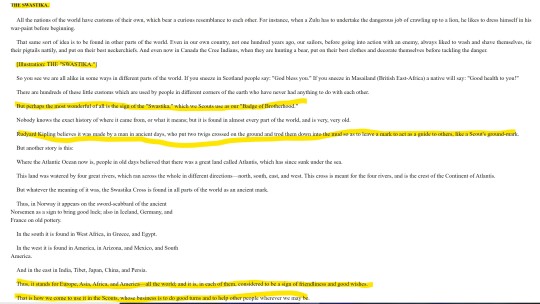
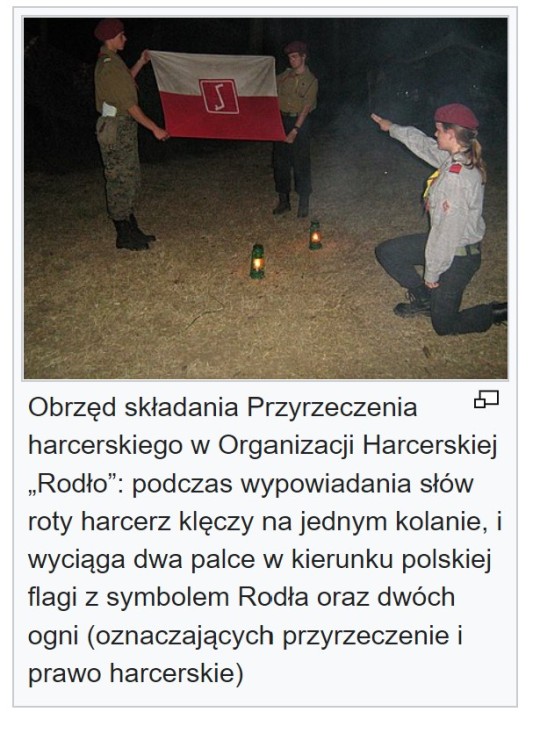
Hey @horrid-little-pedant I can make you a Boy Scouts/international Scouting movement imperialism/colonialism/not-so-crypto-fascism syllabus if you’d like but for a first tantalizing taste here is:
Fig 1) Robert Baden-Powell, founder of the Boy Scouts and the Scouting movement, on the swastika symbol, from his 1917 sequel to the classic manual Scouting For Boys, entitled Young Knights of The Empire. Its companion book, for Girl Guides/Girl Scouts, authored by his sister Agnes, was called How Girls Can Help Build Up the Empire. The Baden-Powell family, prominent British military aristocrats, were instrumental in the British colonial expansion re: South Africa. Baden-Powell’s inspiration for the Boy Scouts was the Mafeking Cadet Corps, a group of child soldiers formed by Lord Edward Cecil shortly before the Siege of Mafeking that secured Robert’s place in annals of imperial military history. His niece Betty later became--I am choking and wheezing and coughing up a hairball getting this phrase out--Scoutmaster for the. Girl Guides of North Rhodesia. Do not even get me STARTED on, uh. The Peace Light of Bethlehem (tl;dr it’s a program inaugurated in Austria circa 1986 nominally to help ~handicapped children, but of course. In 2005. The International Commissioner of Austria symbolically passed the Peace Light to a delegation of Scouts and Guides from the Palestinian National Authority, comma, just after the Oslo Accords. And then in 2007 a delegation of Guides and Scouts from Austria, Germany, France, Jordan, Israel, and the PNA--by the way, all but Jordan and Israel are part of the Catholic international Scouting branch that generally, depending on region, ‘pledges allegiance’ to “[country], God, Church, and Christian Europe”--they symbolically lit the ~*~Peace Light together. In. Bethlehem. Scouting is the most fucked-up Bad Internationalism movement in the world.)
Fig 2) The Rodlo symbol was designed by a woman who was part of the Polish minority population in Germany, she went to a Sokol (also Scouting!!!) gymnasium, she got a scholarship to study with Wladyslaw Skyoczylas and other modernist naive folk-revival painters at the school of fine arts in Warsaw, she survived the war, she got into this bizarre movement of neo-pagan anti-clerical pan-Slavist ‘nationalism’ that confirms every single thing I said in my undergrad thesis, she wants to take these symbols back from Hitler and stress the uniqueness of the Polish-German border regions that are neither like, fashy Catholic nationalist Poland nor fashy-flavor Germany, unfortunately that’s not how history or visual semantics work. She says it’s ‘rod’ plus ‘godlo’ (pretend it’s a liquid l) but it’s rodnoverie, we know what you’re about, Joasia--or rather, if you have to give a paragraph-long disclaimer every time you present your lovingly-rendered symbol, you gotta just let it go once it reaches critical mass and recognize that that your defensive disclaimers come across as “my t-shirt is raising a lot of questions that are answered by the shirt.” Anyway. This Harcerstwo troupe named after...the Harcerstwo movement that became a WWII paramilitary and subsequently Catholic anticommunist movement adopted it as their symbol. They’re from a small town in the Katowice region and they are. Well. If you don’t want everyone to think you’re fascists then maybe don’t be a paramilitary organization with a Hitler Youth lite flag (if you put the Rodlo on the Polish flag...it’s...it scans as the swastika on the...they know! They’re not oblivious, they do 500 WWII memorial actions per year!). And don’t have your scouts swear fealty in military fatigues while doing the seig heil to the Slavic Hitlerjugend flag in the woods. Ya dig. Their website is like “why are our enrollments declining :(”
idk man maybe your town’s teens want to smoke weed under the bridge and not be put through boot camp after school
#NISHT REBAGELN#i have so much autism about scouting and it is extremely embarrassing but if you have questions about it. i have Answers#also did you know the UU church got in a huge fight with boy scouts of america#and boy scouts of america got in a huge fight with baden-powell about being allowed to say god#i do not need to explain the context of the PNA & the oslo accords for tumblr user horrid-little-pedant but can if other people are not awar#*aware. Scouting: Bad Internationalism#OH. wanna hear about the officially recognized Boy Scouts Displaced Persons DIvision after WWII dissolved c. 1950#or Mury: Harcerki Troupe of Ravensbruck#did you know krupskaya once used komsomol and 'boyskautizm' as synonyms and that#ok i got distracted but again. rudyard kipling. he just tweeted it out. there are also 800000 examples in this book about Helping Police#and how scouts are like bees: serve their Queen & DISPOSE OF THE UNEMPLOYED#also baden-powell's sister agnes was great friends with marconi you know the long-distance radio transmission inventor who#joined the italian fascist party in 1923 like years before mussolini came to power and#used his authority as director of the science institute to mark all jewish applicants' papers with an E (italian word for jew starts with E)#& none were admitted during his tenure. before this became state policy & before this pressure was even. you know. subtly dispersed by#mussolini. just of his own initiative!#he has so many quotes praising fascism i couldn't fit them in one document#the british monarchy & aristocracy will see continental european fascism and especially german & go 'Tell Me More...'#the polish nobility AND endecja will see various permutations of fascism & say 'tell me more...' for different reasons#the polish intelligentsia will see ITALIAN fascism & say 'tell me more [eyes emoji] while condemning german fascism bc one has#better aesthetics#meanwhile stefania zahorska & bruno schulz are having stress-induced heart disease#pilsudski wants to be england so bad it makes him look stupid. & dmowski hates england & germany on paper but also#wants to be them so bad it makes them look stupid if he can do it with the slavophile side of the slavophile vs. westernizer debate#comma american industry and isolationism comma good old WWI 'ethnographic borders' comma#and solve The Jewish Question (threat)
22 notes
·
View notes
Text

Germans are weird
#and russian monarchies in the interests of the “warrior races” of germans and mongols (a baltic german#germany#german spitz
5 notes
·
View notes
Text

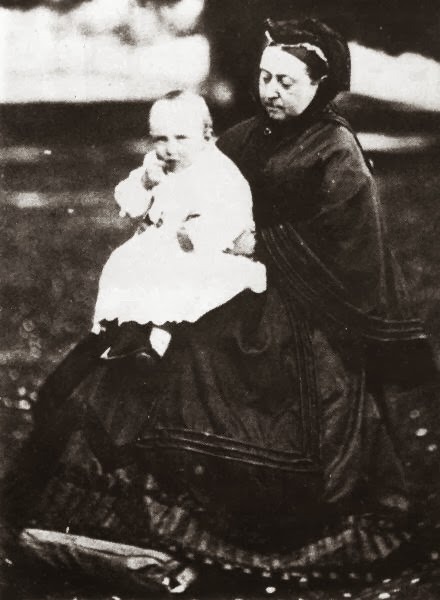
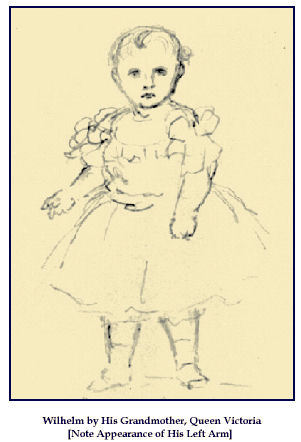
Kaiser Wilhelm II appearance as a baby;
“They say all babies are alike,” wrote one German observer. “I do not think so: this one has a beautiful complexion, pink and white, and the most lovely little hand ever seen! The nose rather large; the eyes were shut, which was as well, as the light was so strong. His happy father was holding him in his arms.”
“He is growing so handsome and his large eyes have now and then a dreamy expression and then again they sparkle with fun and delight.”
- Victoria, Princess Royal writing to her mother, Queen Victoria.
source: The Innocence of Kaiser Wilhelm by Christina Croft
photos: Victoria, Princess Royal, now Princess Frederich of Prussia holding the newborn Prince Wilhelm, later Kaiser Wilhelm II. Queen Victoria holding her grandson, Wilhelm and the final is a drawing of him made by her.
#i felt the need to post this#he was such an adorable baby lol#cutie pie#kaiser wilhelm ii#wilhelm ii#monarchy#german monarchy#imperial germany#germany#german empire#victoria princess royal#empress frederich#queen victoria#emperor frederick iii#british monarchy#brf#british royal family#royalty#royal family#german royal family#german royalty#great britain
21 notes
·
View notes
Text

Rudolf von Habsburg and the Priest by Johann Peter Krafft
#rudolf von habsburg#rudolf of habsburg#priest#horse#art#horses#johann peter krafft#landscape#hunting#medieval#middle ages#river#habsburg#history#europe#european#habsburg monarchy#german#count#king#germany#austria#swizterland#religious#religion#christianity#christian
59 notes
·
View notes
Text
A person on the radio said "king size Größe" and I keep thinking about the fact that they said "king size size"
#also it was a joke about someone in the british royal family having a king size bed#don't ask me why certain germans are seemingly obsessed with the british royal family#we haven't had a monarchy since 1918#-franz#(adding my name after the last tag feels like i'm saying 'trust me. i know something about monarchies. my name's franz after all)#(which is unrelated. i don't like monarchies)
0 notes
Text
DID MY GERMAN COMM SAY THAT PRINCE ANDREW DESERVED THAT UNIFORM??
#And that the monarchy has to deal with the FEELINGS of the people.... HE WAS A PEDOOOOOO#sham!s rambles#Update hes a BRIT speaking german....
0 notes
Text
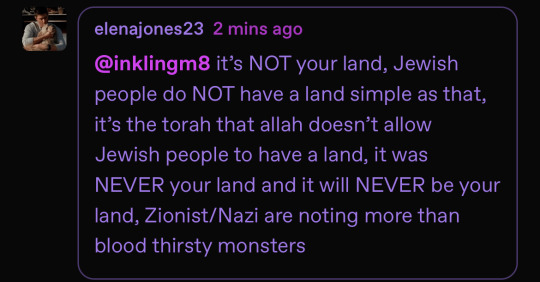
@elenajones23 first of all, who are you, a non Jew to lecture me about what my religion does or doesn’t allow? Who are you to tell me, as someone who doesn't practice the same religion, that I can or cannot do things?
The Torah isn’t a simple set of guidelines and commands, it’s far more complex than that. It has different interpritations, so saying the torah doesn't allow it is blatantly false. The name "Zion" (Promised land) is mentioned 154 times.
“It isn’t your land and it never was your land” bullshit.
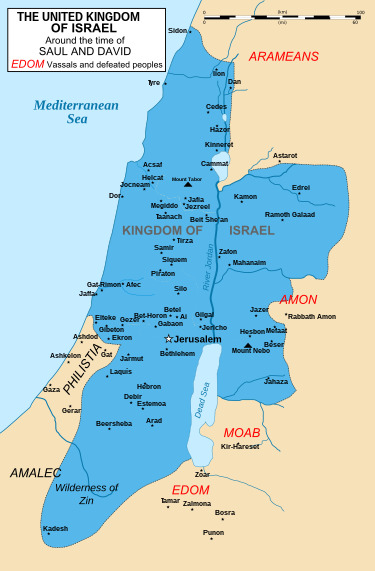

We absolutely do have a land, if we don't, then why do we have holy sights in Jerusalem? Why are names like "Jaffa" and "Haifa" Hebrew?
The land of Israel is where my ancestors came from, it is where they lived, it is where they had a connection to, and it is where they suffered under the romans and were exiled.
We were never welcomed in Europe, we were never welcomed in the rest of the middle east.

These are ancient scrolls called the "Dead sea scrolls" which are a set of ancient Jewish writings dating from the 3rd century BCE.

This is all of what remains of our ancient temple, this is what it once was:

The first temple is Solomon's temple, the second one is Herod's temple, which was destroyed in 70CE by the romans. centuries later, the Muslim caliphates built the Al Aqsa mosque which was built on top of our temple mount. Today, the west wall is all we have left of this historic holy place.
The name "Palestine" was given to the land of Israel by roman colonisers who exiled most of us from the land of Israel, took many of us slaves, and scattered everyone else through western Europe (Some moved further east).
Now about the Nazis = Zionist argument. The Nazis originally made a deal with German Zionist Jews (The Haavara agreement) to bring about a mass migration from Germany to Israel, it should be mentioned that this was because Hitler and the Nazis wanted a Jew-Free Europe, not because the Nazis supported Zionism.
This deal was criticized by both Nazis and Zionists. Zionist criticised it because it made a deal with the devil, and the Nazis criticised it because it went against their philosophy.
The Nazis were extremely antizionist, the belief that they were Zionists is soviet cold war propaganda to demonise the state of Israel and the broader Jewish community. They believed that Jews were biologically incapable of running their own state and were too inferior. Hitler had a "Palestinian" friend (Amin al-Husseini) who campaigned in Berlin, fought for a Palestinian state, and even CONTRIBUTED TO THE HOLOCAUST. They also lead a boycott of Jewish businesses in "Palestine".
So, you're wrong. So very very wrong. You can try to lecture me about the history of my own people and religion all you want, but you're wrong.
Please, kindly fuck off and read a history book. Please attend a Synagogue service and learn more about our religion before you come spewing false bullshit about it.
420 notes
·
View notes
Text
25 April - Anniversary of Italy's Liberation

25 April also known as the Anniversary of Italy's Liberation is a national holiday in Italy that commemorates the victory of the Italian resistance movement against Nazi Germany and the Italian Social Republic, puppet state of the Nazis and rump state of the fascists, culmination of the liberation of Italy from German occupation and of the Italian civil war in the latter phase of World War II. That is distinct from Republic Day (Festa della Repubblica), which takes place on 2 June and commemorates the 1946 Italian institutional referendum.

Every year on 25 April Italy celebrates Liberation Day, known in Italian as Festa della Liberazione, with a national public holiday.
In addition to the closure of schools, public offices and most shops, the day is marked with parades across the country, organised by ANPI, Italy's partisan association which preserves the memory of the Resistance movement against Fascism.
The occasion is held in commemoration of the end of the Fascist regime and of the Nazi occupation during world war two, as well as the victory of Italy's Resistance movement of partisans who opposed the regime.
Formed in 1943, the partigiani comprised a network of anti-Fascist activists, from diverse backgrounds including workers, farmers, students and intellectuals, across Italy.
Resistance

Together they united in armed resistance against the Nazi occupation and the Fascist regime, making their struggle both a war of liberation and a civil war.
The annual event marks the day in 1945 when a nationwide radio broadcast calling for a popular uprising and general strike against the Nazi occupation and Fascist regime was announced by the National Liberation Committee of Upper Italy (CLNAI), a political umbrella organisation representing the Italian Resistance movement.
This announcement - made by partisan and future president of Italy Sandro Pertini - resulted in the capture and death of Fascist leader Benito Mussolini, who was shot three days later.
The Festa della Liberazione represents a significant turning point in Italy's history, paving the way for the referendum of 2 June 1946 when Italians voted in favour of a republic and against the monarchy which had been discredited during the war and whose members went into exile.
Scurati controversy

This year's event takes place against the backdrop of a political controversy after the state broadcaster RAI stopped a well-known Italian writer from delivering an anti-fascist monologue on television a few days before the Festa della Liberazione.
Antonio Scurati accused RAI of censorship after his monologue was dropped abruptly from the Saturday night talkshow Chesarà for "editorial reasons".
The writer claimed that the move highlighted the alleged attempts by premier Giorgia Meloni's right-wing government to exert its influence over the state broadcaster which has seen several veteran presenters leave over the last year including Fabio Fazio, Bianca Berlinguer and Amadeus.
In his speech Scurati criticised the "ruling post-Fascist party" for wanting to "re-write history" rather than "repudiate its neo-fascist past".
RAI director Paolo Corsini rejected any talk of censorship, as did Meloni who responded to the controversy by posting Scurati's text on her Facebook page, stating that the broadcaster had "simply refused to pay 1800 euro (the monthly salary of many employees) for a minute of monologue".
Meloni added that the Italian people "can freely judge" the contents of the text which was later read live on air by Chesarà presenter Serena Bortone in an act of solidarity with Scurati.
#italy#italia#25 aprile#25 april#festa della liberazione#liberation day#antifascism#history#world war ii#fascism#nazism#antinazi#partisans#resistence#1945#italian history#antonio scurati#giorgia meloni#governo meloni#serena bortone#censorship#storia italiana
199 notes
·
View notes
Quote
The British Constitution cannot exist without the monarchy. Remove the Crown and the entire artificial structure collapses. And the less significant the monarchic element has become in reality, the more significance it has acquired for the Englishman. Nowhere is this non-ruling personification worshipped more than in England. The English journals surpass the German by far in slavish servility. This disgusting cult of the king as such, the worship of a completely emasculated and meaningless notion, not even a notion, but the mere word “king”, is the consummation of monarchy
Engels 1844
971 notes
·
View notes